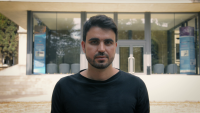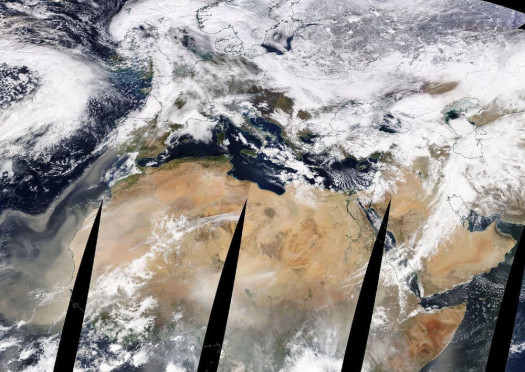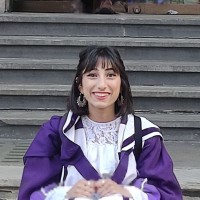Extreme Weather Events
Pollution
Societal Challenges
Severe Storms & Precipitation
Air Quality
AXA Chairs
Spain
2016.09.30
Understand and predict sand and dust storms to manage their impacts upon society and economy
Sand and Dust Storms and Their Diverse Impacts (Environmental, Economic, and Sanitary)
As the most abundant aerosol in the atmosphere, dust is pervasive and capable of traveling thousands of kilometers, as illustrated by the impressive swath of Saharan dust over Europe in March 2022. Nutrient-rich dust storms carry vital fertilizers across entire continents, but are also a major hazard to human society, with impacts on climate, agriculture, the economy, and health. Prof. Carlos Pérez García-Pando, awarded the AXA Chair in 2015, is an expert in sand and dust storms (SDSs) at the Barcelona Supercomputing Center and ICREA. Hereafter is his ambitious multidisciplinary program that will assist efforts to better predict and manage the effects of SDSs.
Fundamental research: From the lab to the International Space Station
Prof. Pérez García-Pando is involved in multiple endeavors to develop more accurate forecasting models and analytical methods and collect reliable data. Among these is FRAGMENT, which investigates dust mineralogical variations on climate through field campaigns and model development. Linked to this is EMIT, a NASA mission that will be launched on a SpaceX rocket in June 2022. Using spaceborne hyperspectral imaging, EMIT will yield the first surface mineralogy map of the Earth’s arid and semi-arid regions.
Operational forecasting and services
Prof. Pérez García-Pando’s team hosts and contributes to operational forecasting at the WMO Regional Dust Center for Northern Africa Middle East and Europe, and is a strong CAMS-COPERNICUS contributor to regional air quality forecasting. Prof. Pérez García-Pando also coordinates with the Spanish MET service to propel the inclusion of SDSs in the official protocol for providing alerts.
As part of the DustClim project, Prof. Pérez García-Pando and his team have linked their reanalysis datasets to operations in solar power plants, which are affected by “soiling”—dust deposits on solar panels. His data on the mineral composition of dust could also be useful in aviation, especially as many new-generation engines are sensitive to dust and minerals.
Health implications
One focus of the AXA Chair is the effect of SDSs on global health. For this, Prof. Pérez García-Pando contributes to the quantification of the effects of pollutants and dust on respiratory and cardiovascular disease and mortality. While meningitis is now a less pressing issue, with increased vaccination uptake in the African meningitis belt, Prof. Pérez García-Pando plans to explore the effect of dust during meningitis epidemics in collaboration with epidemiologists. His team has also been among the most active groups in Europe looking at air quality changes resulting from Covid lockdowns and the associated health effects.
Knowledge-sharing initiatives
Aside from numerous academic publications, Prof. Pérez García-Pando’s team has created informative content for children and the general public. To influence how countries think about the problem of SDSs, the Barcelona Supercomputing Center also engages with governments and policy-makers, such as the United Nations Convention to Combat Desertification. To impact society, the models and data are open sources for public consumption.
The future of sand and dust storms
With climate change, the world is likely going to be a very different place in the future. Adopting a long-term timescale, Prof. Pérez García-Pando will tackle the question of what dust and SDSs will look like towards the end of the century. He also hopes to explore predictability at sub-seasonal scales.
April 2022
Find out more about Prof. Carlos Pérez García-Pando's project

Carlos
PEREZ GARCIA PANDO
Institution
Barcelona Supercomputing Center
Country
Spain
Nationality
Spanish
Related articles
Climate Change
Pollution
Aerosols & Particulate Matters
Public Health & Health Policy
Toxic Pollutants & Hazardous Substances
Post-Doctoral Fellowship
Greece
2023.06.01
Insight in Dust Fine-Mode to Mitigate Health Hazards in a Changing Climate
Expected start date:June-2023 In late-April/early-May 2022, a surge of remarkable dust storms ravaged Iraq, resulted- according to the World Health... Read more

Emmanouil
PROESTAKIS


.thumbnail.jpg)
